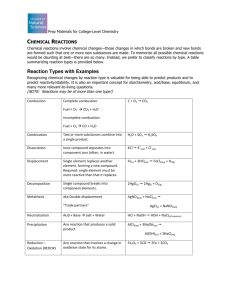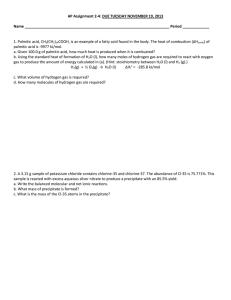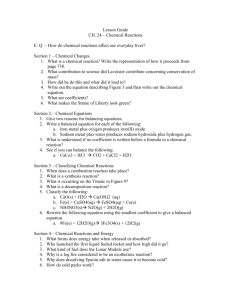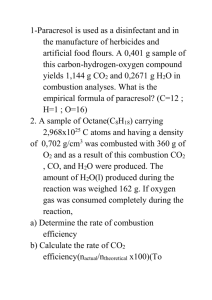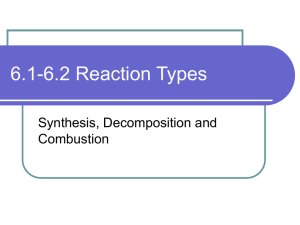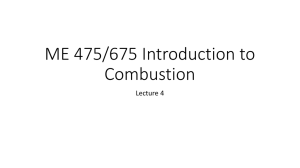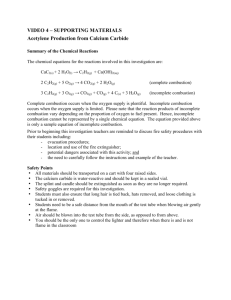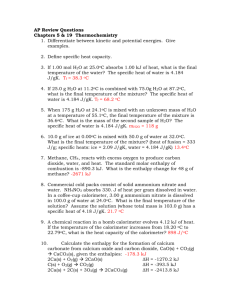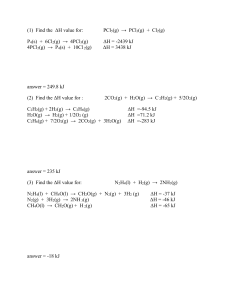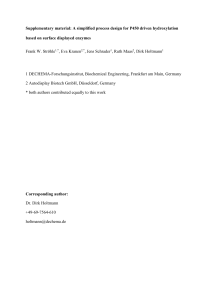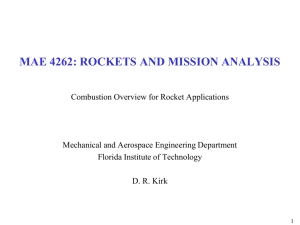Standard Heats of Formation Worksheet
advertisement
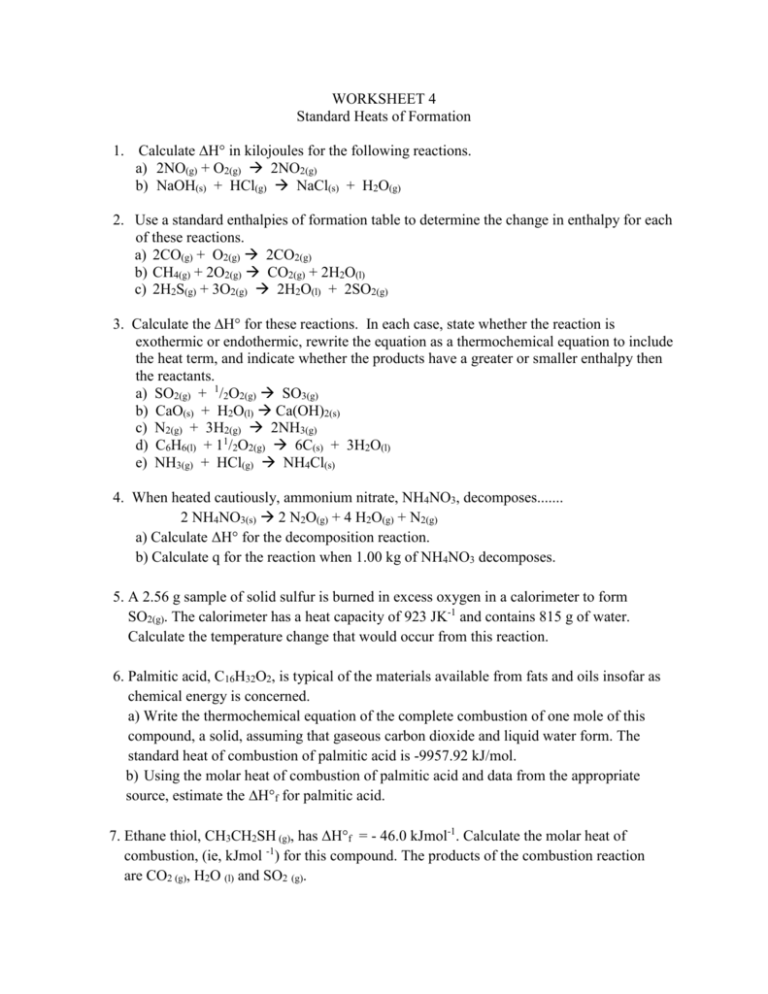
WORKSHEET 4 Standard Heats of Formation 1. Calculate ∆H° in kilojoules for the following reactions. a) 2NO(g) + O2(g) 2NO2(g) b) NaOH(s) + HCl(g) NaCl(s) + H2O(g) 2. Use a standard enthalpies of formation table to determine the change in enthalpy for each of these reactions. a) 2CO(g) + O2(g) 2CO2(g) b) CH4(g) + 2O2(g) CO2(g) + 2H2O(l) c) 2H2S(g) + 3O2(g) 2H2O(l) + 2SO2(g) 3. Calculate the ∆H° for these reactions. In each case, state whether the reaction is exothermic or endothermic, rewrite the equation as a thermochemical equation to include the heat term, and indicate whether the products have a greater or smaller enthalpy then the reactants. a) SO2(g) + 1/2O2(g) SO3(g) b) CaO(s) + H2O(l) Ca(OH)2(s) c) N2(g) + 3H2(g) 2NH3(g) d) C6H6(l) + 11/2O2(g) 6C(s) + 3H2O(l) e) NH3(g) + HCl(g) NH4Cl(s) 4. When heated cautiously, ammonium nitrate, NH4NO3, decomposes....... 2 NH4NO3(s) 2 N2O(g) + 4 H2O(g) + N2(g) a) Calculate ΔH° for the decomposition reaction. b) Calculate q for the reaction when 1.00 kg of NH4NO3 decomposes. 5. A 2.56 g sample of solid sulfur is burned in excess oxygen in a calorimeter to form SO2(g). The calorimeter has a heat capacity of 923 JK-1 and contains 815 g of water. Calculate the temperature change that would occur from this reaction. 6. Palmitic acid, C16H32O2, is typical of the materials available from fats and oils insofar as chemical energy is concerned. a) Write the thermochemical equation of the complete combustion of one mole of this compound, a solid, assuming that gaseous carbon dioxide and liquid water form. The standard heat of combustion of palmitic acid is -9957.92 kJ/mol. b) Using the molar heat of combustion of palmitic acid and data from the appropriate source, estimate the ∆H°f for palmitic acid. 7. Ethane thiol, CH3CH2SH (g), has ΔH°f = - 46.0 kJmol-1. Calculate the molar heat of combustion, (ie, kJmol -1) for this compound. The products of the combustion reaction are CO2 (g), H2O (l) and SO2 (g). 8. When iron metal, Fe, reacts with excess oxygen, Fe2O3, is formed. Calculate the amount of heat energy evolved when 5.58 g of iron is used for this reaction. Answers: 1a) -114 kJ b) -65.4 kJ 5 Δt = 5.47 K 8 -41.2 kJ b) -135.1 kJ 2a) -566 kJ b) -890.7 kJ c) -91.8 kJ d) -906.4 kJ e) -176.2 kJ 6a) C16H32O2(l) + 23 O2(g) 16CO2(g) + 16 H2O(l) + 9957.92 c) -1124 kJ 4a) -71.9 kJ b) -910.9 kJ 3a) -98.9 kJ b) -449 kJ 7 -1.90 x 103 kJ
